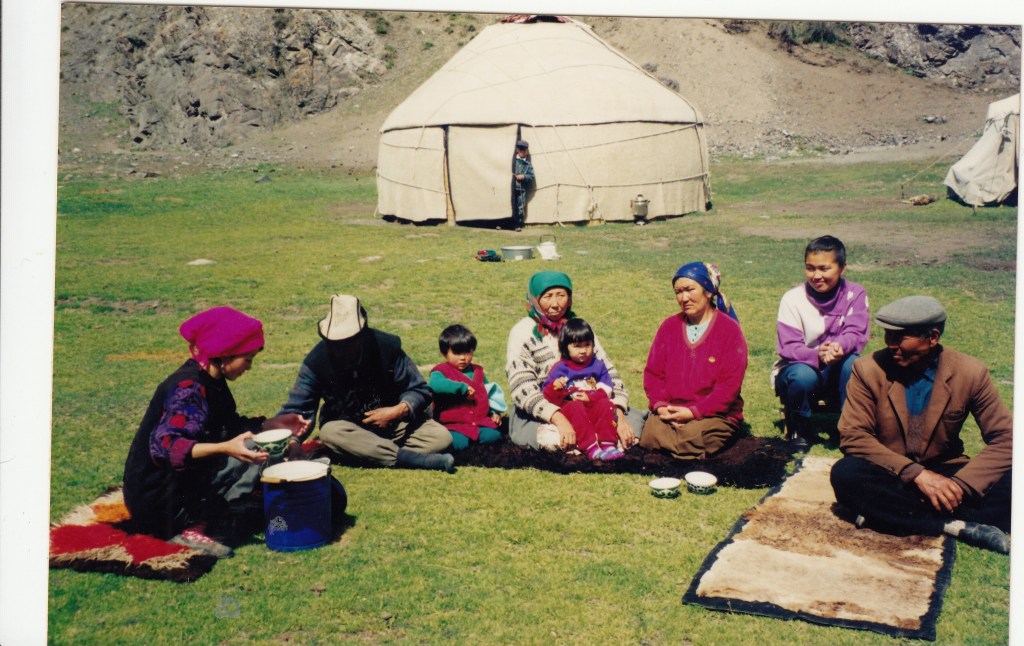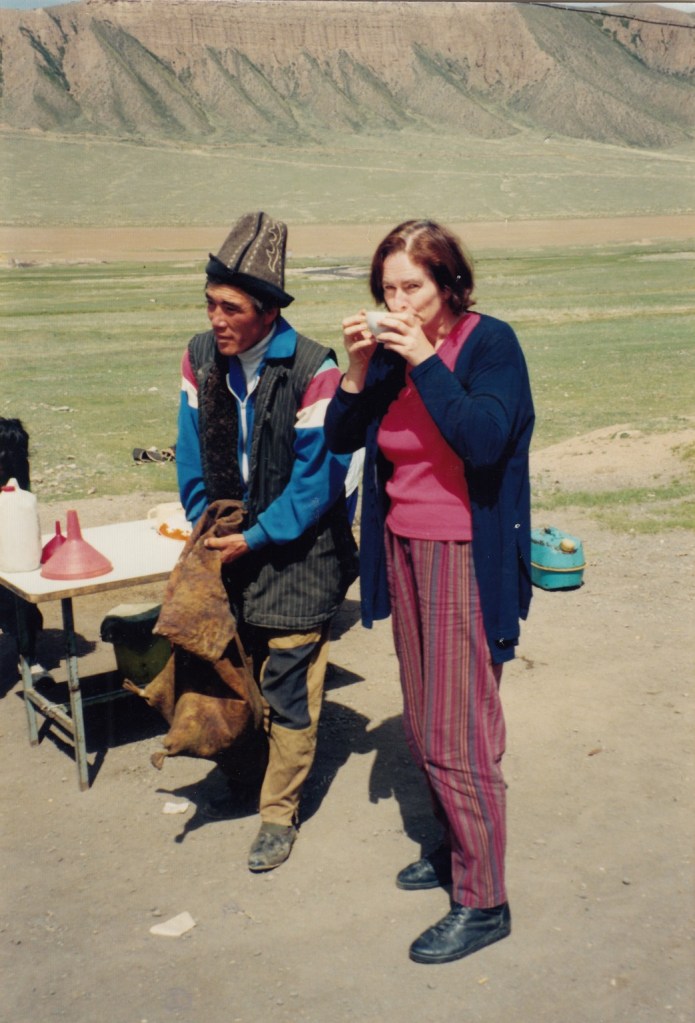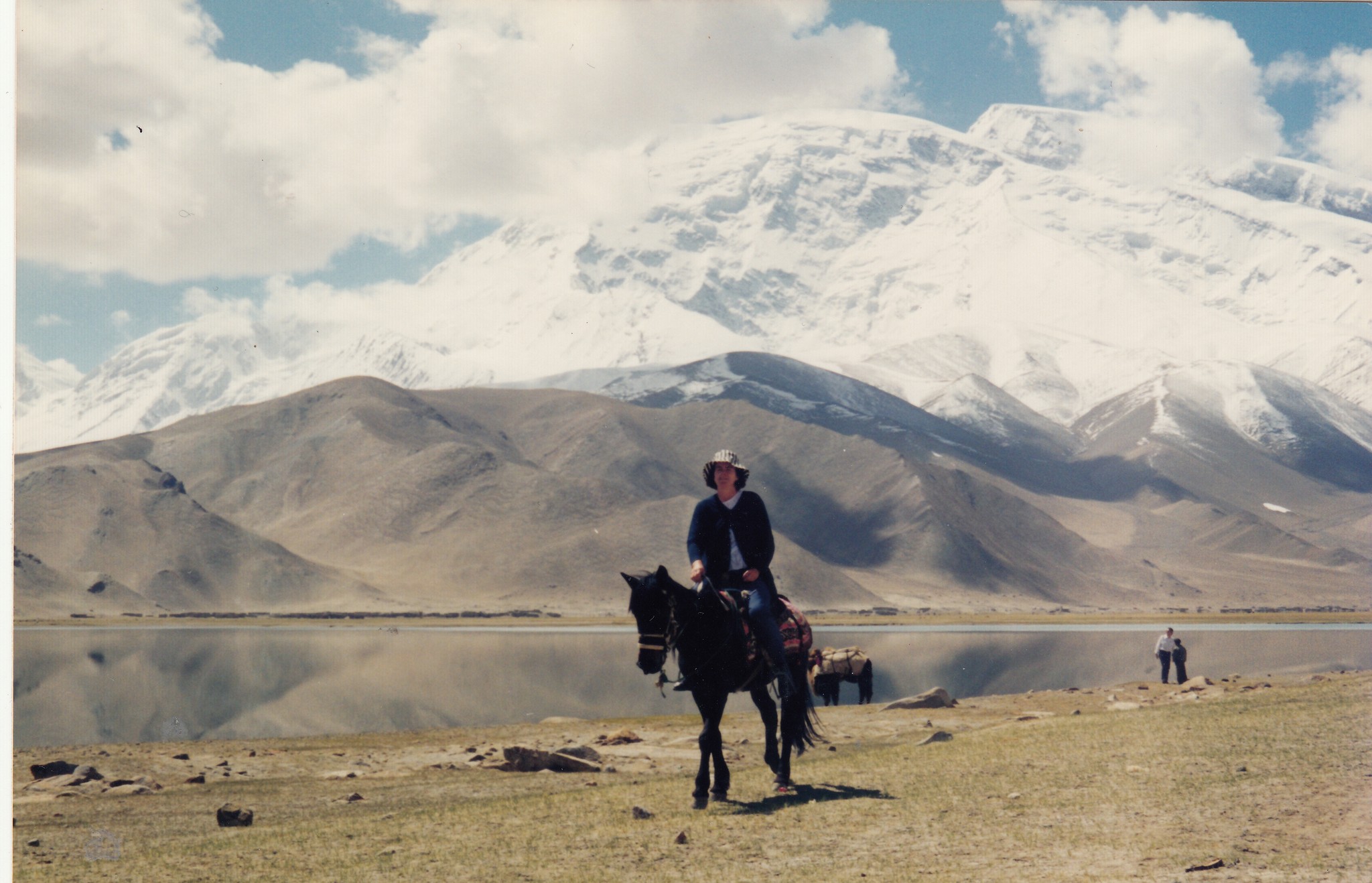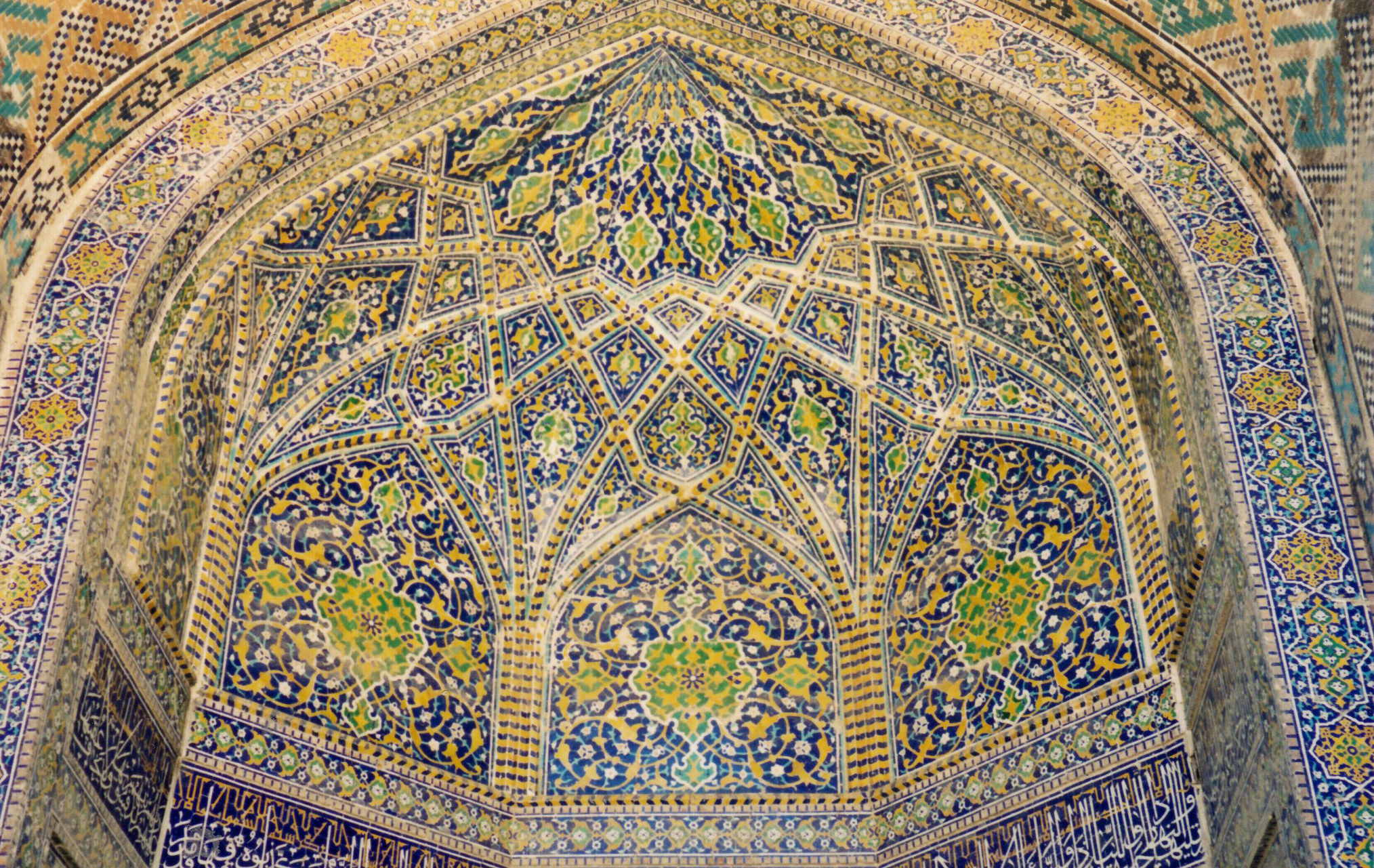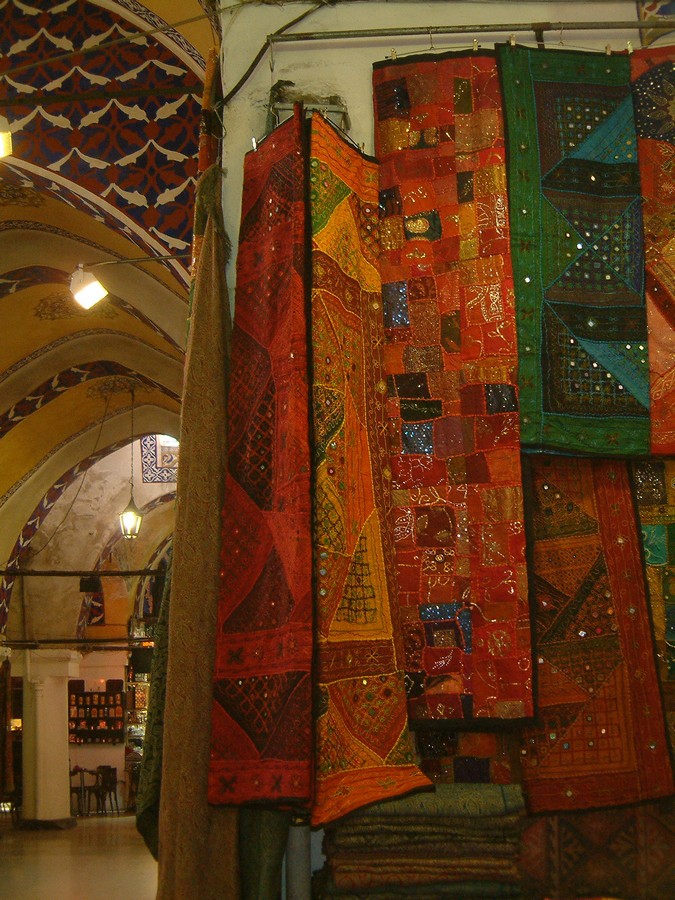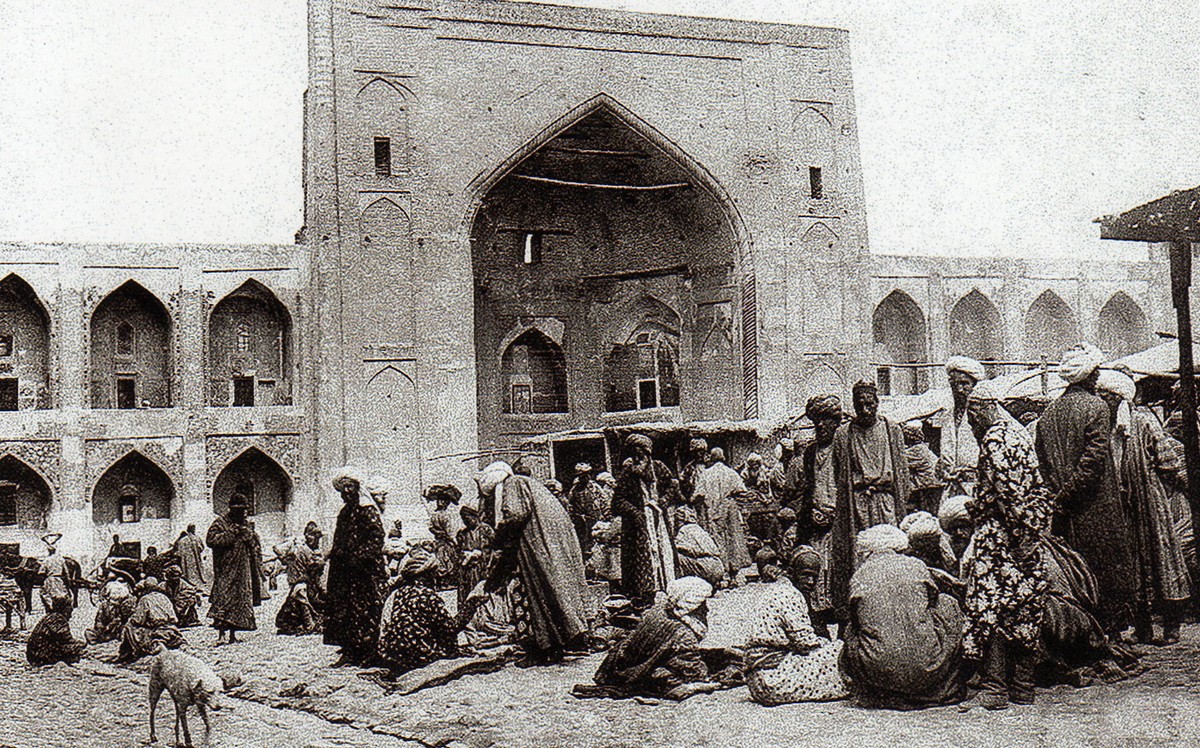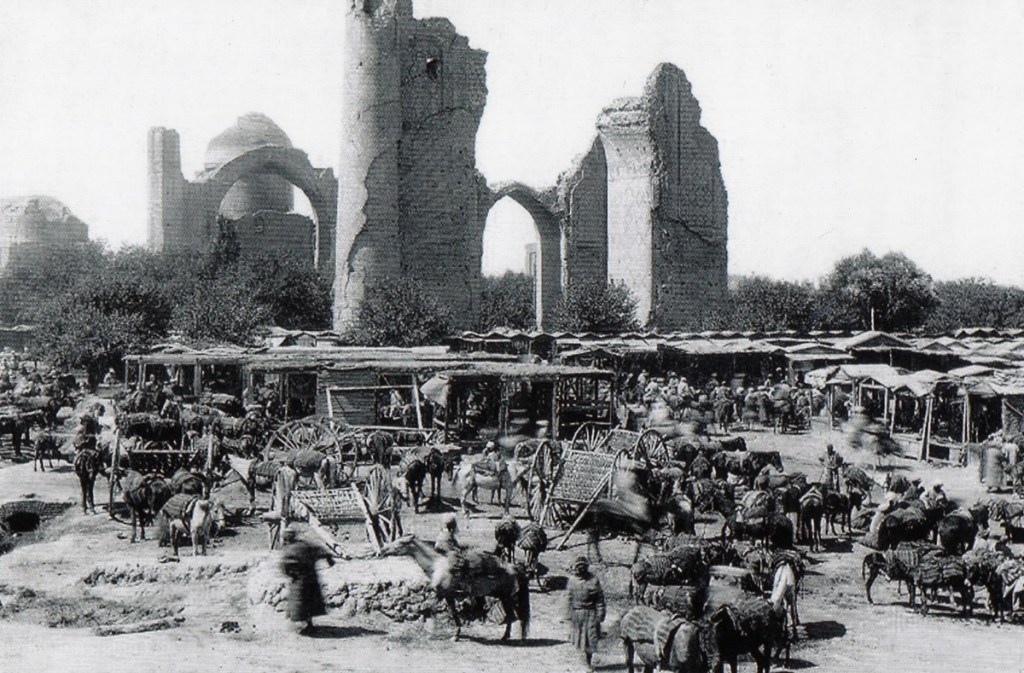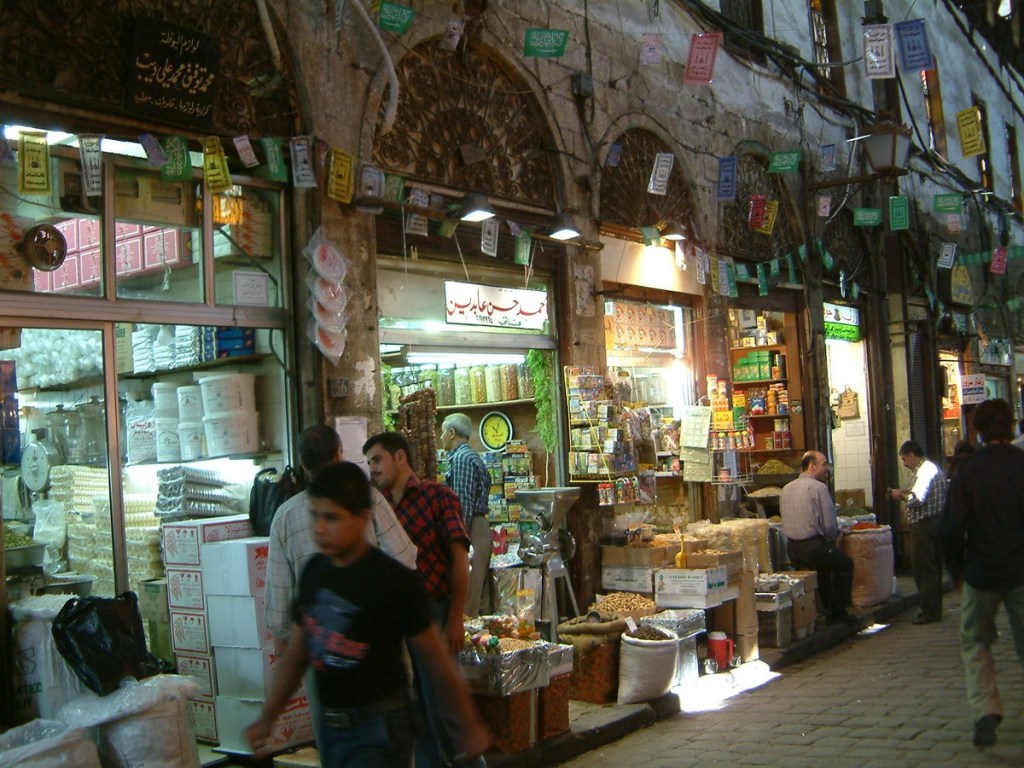
The Life of the Bazaar
We think of bazaars as a kind of exotic marketplace, offering goods which may include interesting, rare and colourful items, from distant lands. Displays are often dazzling, whether of spices, silks or gold. Even an array of humble teapots can be elevated to an art form, as you can see in the photo below. And who could gaze at these coloured lanterns without being reminded of Aladdin, or Tales of the Arabian Nights? During a period when I used to visit the Grand Bazaar in Istanbul almost every year, I noticed that on each new visit there would be something exotic, new and striking on offer, hanging from the ceiling or piled up in tottering towers. Even in modern times, surprise and delight is intrinsic to the allure of the bazaar. This isn’t the first time I’ve written about the bazaar – as a long-time lover of the Silk Road and its markets, I’ve featured them on Cherry’s Cache, in blogs such as ‘The Bazaars of the Silk Road’ and Suzani from the Silk Road. However, this time I’ll be taking the life of the bazaar a little further, beyond that of tempting merchandise.



Yes, there’s more to a bazaar than buying and selling.
A book on the history of the Bazaar, as a place for traders, travellers and craftsmen, makes two significant statements:
‘When asked if he was ever lonely on his journeys, the British explorer and eminent Arabist Wilfred Thesiger replied that, in towns where he did not know anyone, he simply went into the bazaar and struck up a conversation with a shopkeeper. Tea would be brought, other people would join them, and he would be invited for lunch or an evening meal.’ (The Bazaar – Markets and Merchants of the Islamic World p45)


And the bazaar has a spiritual dimension. As the same book says, in relation to Islamic bazaars: ‘It is not by accident that the mosque is the centre of the bazaar.’ (The main bazaar of a city often has a mosque at its heart, or aligned alongside it, as with the great Umayyad Mosque in Damascus.) The mosque hasn’t always been just for worship, but has served other functions too, as a place where court cases might be heard, sick people treated, and students taught in a ‘madrassa’, for both religious and secular education. Thus the mosque combined with the bazaar can form the centre of a hub which is not only about trade, but also about social interaction, and spiritual aspiration. Historically, therefore, the Bazaar has always been a relatively safe place. Stallholders trust each other, and theft or aggression is rare.
When I visited Syria in 2005, just before the civil war broke out, I bought a gold chain from an Armenian goldsmith in the bazaar of Damascus. A friend from the tour came with me and by great good fortune she spoke both Arabic and Armenian fluently, so we had a fascinating conversation with this man, and he was well-disposed towards us. He told us that all his merchandise – worth a small fortune – was completely safe. He didn’t even need to lock up, although he did take sensible precautions, as nobody would dare to come in and steal from his shop. Of course, some of this might have been due to the extreme control exercised by the government, but nevertheless it makes the point that the bazaar is as safe a place as any. And further back in time, in 1969, when I was a student, I spent a summer in Istanbul staying with a family there, free to wander the city by day while they went about their day jobs. (And that’s another story!) As a long-haired, mini-skirted semi-hippy you might think was asking for trouble, with hot-blooded young men swarming the streets. But although I spent many hours and days roaming the bazaar, I never came to any harm – no one laid a finger on me, although of course I was pestered verbally in a good-humoured way from time to time. I also went into mosques, respectfully with my head covered, and was met only with kindness. (I did once get converted by mistake, but that’s yet another story…) This has some relevance to the story which comes later on in this blog.
Below: the great Umayyad Mosque in Damascus, which is situated in the area of the bazaar


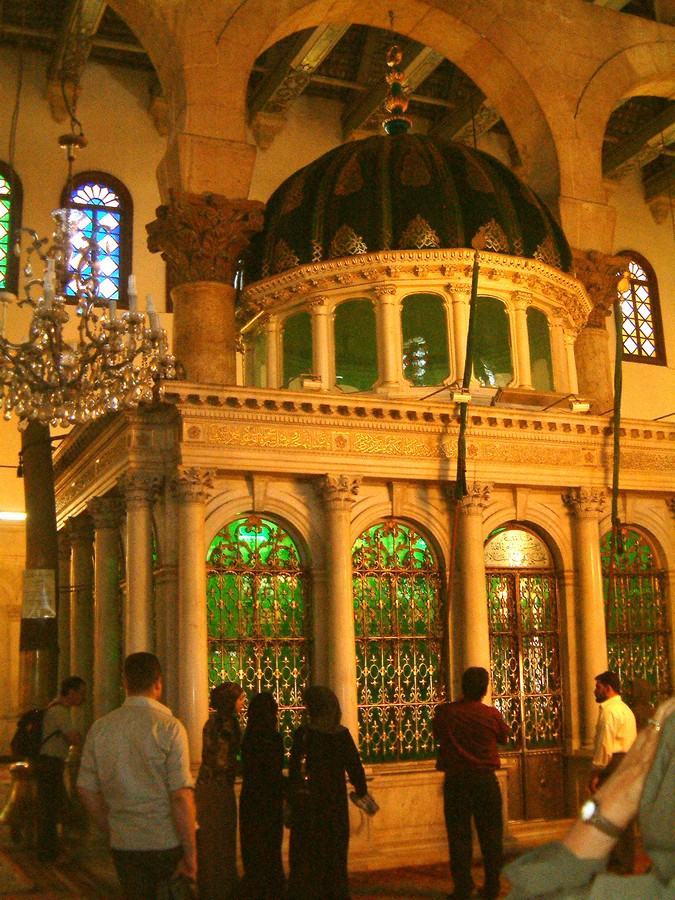

The Appointment in Samara
So given the importance of a bazaar to the city, it’s not surprising that stories, myths and remarkable true life encounters may be set there. Here’s a philosophical twister, and a sharp reminder of our human limitations. The message is, most probably: ‘You cannot outwit your fate’. Or perhaps you’ll think differently? It is based on various ancient tales, and was recounted by W Somerset Maugham in 1933 as ‘The Appointment in Samara’.
Below: what is left of the magnificent ancient city of Samara


The servant speaks: There was a merchant in Baghdad who sent his servant to market to buy provisions and in a little while the servant came back, white and trembling, and said, ‘Master, just now when I was in the market-place, I was jostled by a woman in the crowd and when I turned I saw it was Death that jostled me. She looked at me and made a threatening gesture; now, lend me your horse, and I will ride away from this city and avoid my fate. I will go to Samara and there Death will not find me’.
Death speaks: The merchant lent him the horse and the servant mounted it and he dug his spurs in its flanks and as fast as the horse could gallop he went. Then the merchant went down to the market place and he saw me standing in the crowd and he came to me and said, ‘Why did you make a threatening gesture to my servant when you saw him this morning?’ ‘That was not a threatening gesture’, I said, ‘it was only a start of surprise. I was astonished to see him in Baghdad, for I had an appointment with him tonight in Samara.’
From the literary point of view, so much is packed into this short tale that it is often used as a focus of study. On one of the creative writing courses which I tutored, the course author had written a whole exposition of its structure and impact, concluding: ‘Here, in miniature, are all the things that we find in more detail in Shakespeare or Hardy: character, plot, an unexpected turn of events, a sense of fate and irony, and a climactic conclusion.’

Death as a Woman
And what about Death – who turns out to be female? Much discussion has taken place as to whether death is male or female – for example, see Death: personification. But certain cultures definitely do have a death goddess: the Slavs have Morana, the Goddess of Death, the Mexicans Santa Muerte, and the ancient Sumerians have Ereshkigal, goddess of Kur, the land of death. The Sumerian link is significant here, since that ancient civilization existed for around 2000 years until 2,300 BC, in the same region of Mesopotamia where Baghdad and Samarra were later founded, in what is now Iraq. The face of this ancient relief carving of Ereshkigal is gentle, but knowing, and resolute. Place a white robe on her, and imagine her wandering around that ancient bazaar, about to tell you, perhaps, with a touch on the shoulder, that your time is up.
The Sufi Apprentice Carpet Mender: Encounter in Thessaloniki


Byzantine remains in Thessaloniki
And now for happier encounters in the bazaar, but still with a sense of destiny, where perhaps a helping hand or a benign current brings us to where we need to be.
Before coming to the main account by my friend and fellow author Lucy Oliver, I’ll set the scene with a more transitory encounter, which took place in a carpet shop in Thessaloniki in Greece. This was set in a more modern indoor market, perhaps replacing an earlier bazaar. My husband Robert and I were on our way to join a cruise ship as guest lecturers, and were wandering round with time to spare before the evening departure. I am always drawn to old textiles and rugs, and on this occasion there was something about the set-up which tickled my interest. I felt it would be worth striking up a conversation with the owner. Indeed it was; here’s what I wrote later:
‘The old man sits in his shop of treasures. There are Chinese statues, a 13th century wooden figure of Kuan Yin, Uzbeki embroideries and rugs – many of them, for this is primarily an oriental carpet shop.’ (Kuan Yin is a key symbol for me, as a figure of compassion whose forms encompass both the Chinese goddess of mercy to the Christian Madonna. See my blog The Moon Meditation of Kuan Yin.
‘We are in Thessaloniki, which was once an important port on the Silk Road trading route. Robert and I are setting off on a Black Sea cruise, for which I am a guest lecturer. The city is a fascinating amalgam of old and new, Byzantine ruins alongside the modern shopping centre where we are now. But this shop is something different, not peddling cheap fashions or tourist souvenirs. The owner tells us his story with great dignity. I think he recognised my own interest in the wisdom traditions of Central Asia. He said:
“I was sent out to Afghanistan at the age of sixteen to train as an apprentice in a carpet shop, selling oriental rugs. I was told that I could either go to Iran or Afghanistan to learn carpet mending, so I asked my father what I should do. He was in the military, and he told me: “Everyone goes to Iran, so go to Afghanistan!”
“My master there was a Sufi. He taught me how to get up in the morning and seize the day. In fact, he taught me how to live. He was 82 years old, and had a great presence, great love. Even to this day I remember my Sufi master. If I have a question about what to do, I ‘ask’ him in my mind.“

What is Sufism?
Sufism is hard to pin down, but I would describe it as a way of wisdom which has taken root as an inner tradition within Islam, but which in fact may be a separate path of knowledge dating from a much earlier time. I am not a Sufi expert or scholar, but I’ve had my fair share of interaction with Sufis and the literature of Sufism, so I will express my opinion that it is a way, rather than a dogma, with the aim of living in the world, as best one can, with love and wisdom. It’s often been said that the wise Sufi master in your town might be the man you see sweeping the road, or who mends your shoes.
Sufis are generally open to those of other religions or none. A Sufi may follow conventional Islamic worship, along with holding Sufi rituals and gatherings, or go with their own sense of what is fitting for the service of God. As one Sufi sheikh (leader) pronounced: ‘Rules and customs are for the protection of the foolish; they do not concern me.’ (Witness – J. G. Bennett p 317) They are renowned for using music, chant and dance in their ceremonies, and there are generally considered to be twelve different orders of Sufis, all with their own approaches.

Sufis in person
As for the Sufi we met in Thessaloniki – perhaps he would have been too modest to describe himself as a Sufi –his business was indeed very much in line with the strong Sufi tradition of carpet making and selling. In the 1990s, for instance, my husband and I met various Sufis in the carpet shops of Konya in Turkey, when we visited the town in December for the annual Rumi Festival. Mevlana Rumi, who has since become well-known world-wide, was a 13th century Sufi mystic and poet. He wrote in Persian, and lived in various parts of Central Asia, spending his last years in Konya. He founded his own order of dervishes, the Mevlevi, who are known for their white-skirted ‘turning’ dance. There’s a useful an account of his life, and his time in Konya in the World Pilgrimage Guide .
One of Rumi’s most famous poems is (in translation):
Come, come, whoever you are.
Wonderer, worshipper, lover of leaving.
It doesn’t matter.
Ours is not a caravan of despair.
Come, even if you have broken your vow a thousand times.
Come, yet again, come, come.
Pictures below: taken at the Rumi Festival in the late 1990s, with one of the author falling in love with a lion, just to add in something different…



In the heart of the bazaar: meeting the Helveti dervishes
I have been privileged to meet and to know various Sufis among both the Mevlevi and the Helveti orders. I’ve attended ‘zikrs’, the spiritual ceremonies which are usually accompanied by a combination of music, chanting and forms of movements or dance. But I’m going to hand over now to author Lucy Oliver, who describes her personal encounter with the Sufi tradition in the heart of the bazaar at Istanbul. This is very much in parallel with my own experience there. Lucy and I have known each other for decades, but only just discovered that we both had similar experiences in Istanbul, were looked after by the same contact – Mr ‘L’ – and attended the Thursday night Zikr ceremonies in the ‘tekke’ or dervish temple. How did it take us so long to realise that we’ve both had such similar encounters in the bazaar?
The extracts from Lucy’s diaries are set out verbatim, with her kind permission, and accompanied by her commentary on these, which is set in italics.

From the diaries of Lucy Oliver
Monday 9th August 1976
This was a very peculiar and significant day, well in the tradition of mysterious Sufi encounters. I had been given the name of a contact, L, and had arranged to meet up with him in the bazaar in the early evening. I wasn’t sure exactly where, but figured I would find it following the directions I had been given on a scrappy bit of paper. The rest of the day I just explored as the fancy took me.
All day I have wandered through the Grand Bazaar of Istanbul, alone, unmolested, very happy.
Afternoon found me in the book bazaar, which was dappled by light from the vines overhead. There were other interesting little shops in this small section of the souk, but I was drawn by one bookshop in particular, stretching back into the shadows. I browsed the manuscripts and pictures displayed outside as if to buy, but of course had no idea of prices. Somehow, I found myself inside the dim interior of the shop, still browsing, and was greeted by a slim charming man with enough English to take my enquiries very seriously, and who politely sat me down to show me some wares.
In the front corner, a cluttered desk was presided over by a large man who was eating chocolate cake, which he immediately offered to me. Embarrassed, as I had already realised purchasing was out of my league and felt rather a fraud being there and being served so attentively, I accepted the cake, and ate it under the eye of the large man in the corner. With no language in common, he twinkled at me in an amused fashion, watching me eat. My embarrassment grew, and cake disposed of, I awkwardly rose to my feet, made some appreciative noises, and departed as quickly as I could.
I went back to the hotel, changed into a skirt and long-sleeved blouse in the interests of respectful modesty (not noticing that the front buttons of the blouse were somewhat straining over my bust and gaping when I moved), and set off to follow the instructions to meet up with my Sufi contact. I bought some grapes in a brown paper bag to take to the Sheik.
But hours later, I had tramped the bazaar from end to end, been jostled by tourists, climbed cobbled streets ringing with hammer-blows (the metal-workers street) and was sweating in frustration as the grapes burst out of their soggy bag. The instructions I had been given simply did not make sense! I had a little hand-drawn map, but I could not orientate it to the vibrant life around.
Finally, as my despair was at its peak, I traversed an alley-way, and found myself back unexpectedly in the book bazaar. At this point, like a slow tide rising to my throat, an awful realization started to dawn. There in front of me was the shop I had entered earlier in the afternoon. It had to be the goal of my search! And I had been there already!
If I had been embarrassed on my first visit, it was nothing to what I felt then, making a second appearance, late, hot and sweaty, exhausted, and clutching a disintegrating paper bag of grapes! These I presented to the man in the corner, the man who had given me the chocolate cake, whom I later knew to be the great Helveti Sheik, Muzaffer Ozak. He looked even more amused to see me. The grapes were carefully placed in a silver dish. Flowers stood on his desk, gold bindings on books shone through the dust; people sat quietly as L and others warmly displayed fine old manuscripts to customers. It was an atmosphere of absolute calm and beauty in the quiet vine-covered corner of the bazaar. Timeless.
When I left, holding a large heavy edition of the Koran and having been invited to come to a zikr on Thursday, I was quite ecstatic. The reality of it, the holiness seemed to follow me into the evening sunlight. Why am I tempted to waste my time in superficialities when such wordless depth exists?

Friday 13th August 1976
I shall always remember my last night in Istanbul. Dinner with L and his wife on their balcony overlooking the Bosphorus. So nice they were.
Then to the zikr. We lurched through the suburbs in a crowded bus, L and me, and an American girl full of impressive talk about her own Sheik back in the USA. She looked totally the part, modestly covered from neck to toe in a long djellabah. I tried pulling the tight sleeves of my blouse down a bit further and hunched my chest so the buttons did not pop open, feeling like a gauche imposter in this ‘proper’ company.
Somewhere down a back street, we left the bus, knocked on a hidden door, and were led past a shadowy tomb through a small door behind. Men in long black gowns were gathering, and I saw the Sheik of my previous acquaintance to one side. The men began their circle, and the chant and stomp gained in speed and intensity, which was fascinating. My critical and ethnologically-trained brain didn’t stop for a minute, as I strove to understand with the heart, a manifestation so unfamiliar. It was like a sophisticated version of African tribal dance. I understood, and yet did not understand. I think perhaps I never will be able quite to attain that sort of communion. I cannot ‘abandon’—yet.
It was so good to be among people who understand. L seems the only person of real intelligence I have met on my travels; it is so rare. But it saddens me, and tonight I felt a little sad and alone, that with all these people in the world, there are fewer and fewer now with whom I can know real communication, and more and more with whom any communication seems impossible. But I must not dwell on this; part of the price I guess.
Anyway, when the zikr was ended, the American girl was making full use of the chance to meet and tell others about her training and Sheik, so that when L was ready to leave with us, she seemed totally unaware, and he had to wait patiently until she dragged herself away. While waiting, Sheik Muzaffer beckoned me over and said something in Turkish. Looking me in the eye, he handed me a string of prayer beads made from olive pits. I thanked him awkwardly, and asked L what he had said. With an air of slight surprise, L translated:
“He said,: ‘You can come again’.”
I went away, hugging these words, said not to the ‘perfect’ visitor, but to the discomforted one with bursting buttons. I won’t forget.
(With thanks to Lucy Oliver, who will be publishing this account as part of her forthcoming memoir)

I will just add one recollection of my own to Lucy’s compelling account. Sheikh Muzaffer was also renowned as an interpreter of dreams, and during our visits, my husband and I were told we could each tell him one of our dreams if we wished. Mine was a recent dream which had perplexed me, as it seemed vivid and significant, but I couldn’t relate it to anything specific. In it, I was watching a white mouse run about the floor with a group of people, and then we were all on some kind of a journey to an unknown destination, but lost some of our party en route. To my surprise, the Sheikh told me that although what we were doing was pure and valid, I could not trust the people we were currently working with. Someone would soon betray me. This I found hard to believe, but so it proved to be; a couple of the members of our Kabbalah study group endeavoured to undermine it, blocking further progress, and spreading unpleasant false rumours. We eventually had to disband, and start again in a new form without them. It cut me to the quick to discover that those I had trusted had betrayed our common purpose. But to have the Sheikh’s endorsement that our spiritual path and search were valid was a precious touchstone.
You can find here an account of Muzaffer Ozak’s life and work.
And so I finish by saying, ‘You never know what an encounter in the bazaar may lead to…’
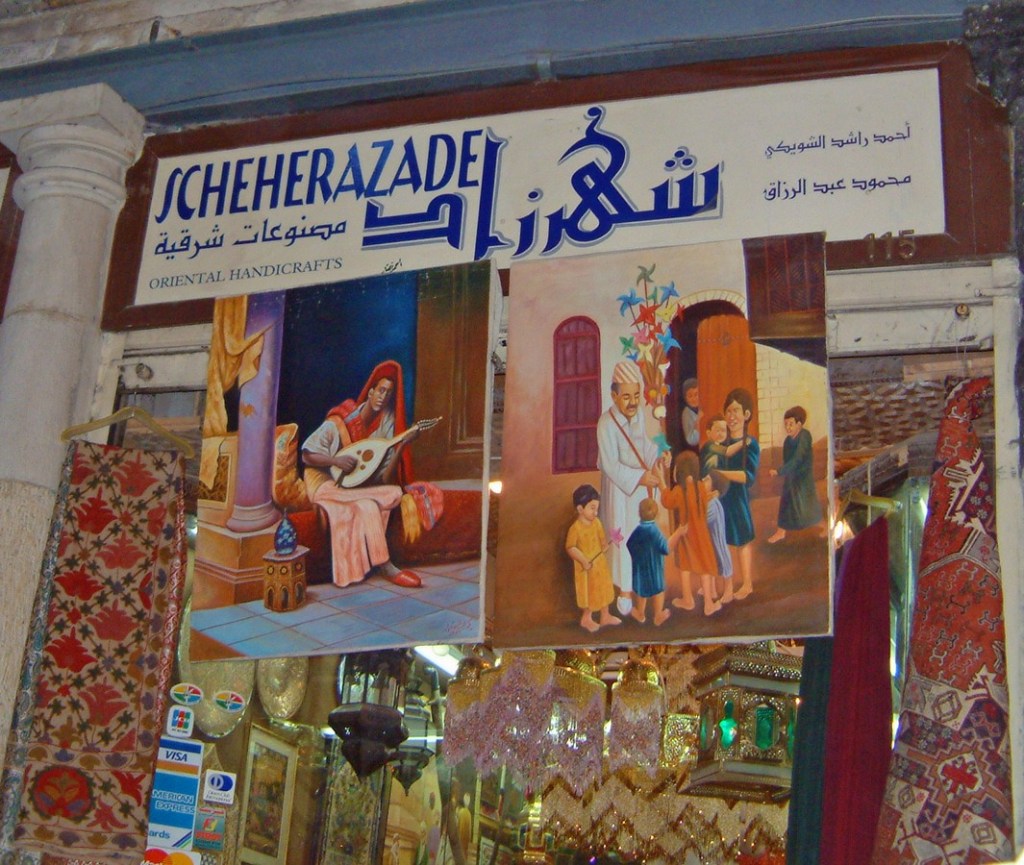
All photos copyright by Cherry Gilchrist except for those of Erishkegal, Samara, and the colour portrait of Muzzafer Ozek.
For other posts on bazaars and the Silk Road, please use the search bar in the blog to locate others which aren’t referenced in this post.
Further reading
Books by Lucy Oliver:
Forthcoming: Diaries of a Young Mystic: Excavating the Intangible (working title; publisher to be announced)
Tessellations: Patterns of Life and Death in the Company of a Master – Matador, 2020
The Meditators Guidebook – Destiny Books, Inner Traditions 1991
Lucy Oliver’s website: Meaning by Design
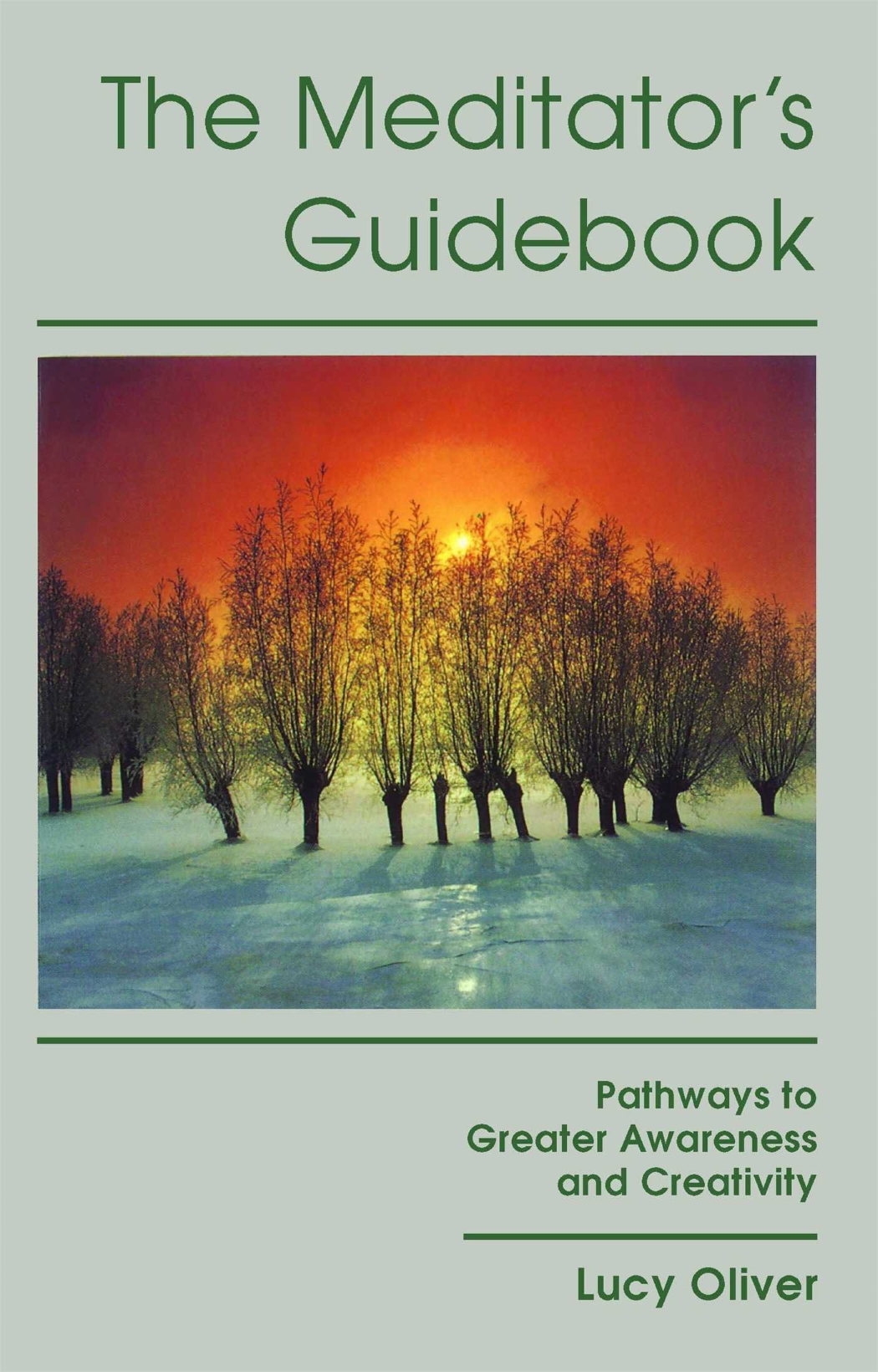

General interest
The Gobi Desert – Cable, Mildred & French, Francesca, 1942
The Bazaar – Markets and Merchants of the Islamic World – Weiss & Westermann, Thames & Hudson, reprinted 2000
Stories from the Silk Road – Cherry Gilchrist, Barefoot Books (various editions)











